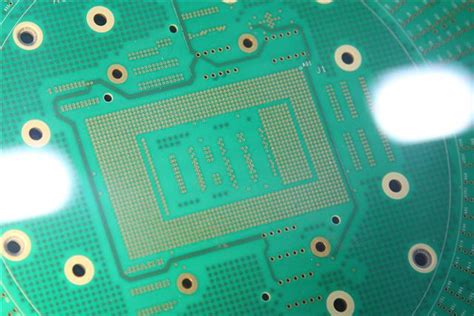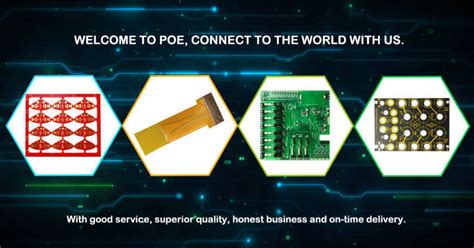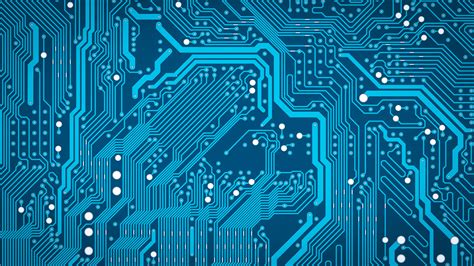Unlocking Precision: The Art of Bare Board Fabrication
Key Takeaways
Understanding the intricacies of bare board fabrication is essential for anyone involved in the field of pcb manufacturing. This process is where both precision and craftsmanship converge, ensuring that you are capable of producing high-quality, reliable products. The first takeaway is recognizing that the quality of your output heavily relies on the techniques you employ. From photoengraving to etching, every method used in pcb manufacturing should be executed with precision to ensure accuracy in design. Furthermore, collaborating with reputable pcb manufacturing companies can significantly impact your project’s success, as these entities often have refined processes and access to advanced technology that may not be available to smaller businesses.
In addition, it’s vital to keep a close eye on pcb manufacturing costs when planning your projects. Effective budgeting can help mitigate unexpected expenses and ensure that you select materials and processes that align with both your financial goals and quality requirements. Beyond costs, developing a sound understanding of best practices can bolster your confidence in running a pcb manufacturing business. This includes maintaining high standards during every phase—from initial design to final inspection—thereby elevating the reliability of your bare printed circuit boards even further.
In summary, mastering bare board fabrication involves a holistic approach incorporating skillful techniques, strategic partnerships with established companies, cost-management practices, and an unwavering commitment to quality control. By internalizing these key takeaways, you will position yourself advantageously within the competitive landscape of pcbs and enhance your capabilities in delivering superior products.
Unlocking Precision in Bare Board Fabrication
In the realm of pcb manufacturing, precision is paramount. You must understand that each stage of bare board fabrication demands meticulous attention to detail and a thorough knowledge of processes. This intricate journey begins with the design phase, where designs are translated into physical prints, ensuring that every trace and pad is perfectly sized. As you engage with various pcb manufacturing companies, it becomes vital to assess their expertise in bare board production techniques, as this can dramatically impact your project’s success. The pcb manufacturing cost can also vary significantly depending on the complexity of the design and the materials used. It’s crucial to balance functionality with budgetary constraints, evaluating how each decision affects your bottom line while maintaining high standards of quality. By prioritizing these essential factors in your pcb manufacturing business, you can elevate your end product’s reliability and performance, setting a solid foundation for future projects. This approach not only enhances the durability of the printed circuit boards but also cultivates a thriving enterprise aligned with cutting-edge advancements in technology.
Essential Techniques for Crafting High-Quality Bare Boards
When diving into the intricate world of bare board fabrication, understanding key techniques is paramount. The process begins with meticulous design preparation, where you ensure that your layout adheres to the specifications required for pcb manufacturing. Utilizing software for computer-aided design (CAD) can significantly streamline this stage, allowing you to visualize and correct potential issues before fabrication. Additionally, the selection of the right materials is crucial; choosing high-grade substrates can influence not only the durability but also the pcb manufacturing cost.
In your pursuit of high-quality boards, achieving precise etching and drilling is vital. Techniques like photoresist application and laser drilling enable pcb manufacturing companies to produce intricate patterns with high fidelity, ensuring that traces are properly defined. You may also consider using automatic optical inspection (AOI) during production to catch any defects early on.
Moreover, don’t underestimate the importance of cleanliness throughout the fabrication process. Contaminants can lead to failures in the final product, affecting both reliability and performance in your pcb manufacturing business. By incorporating rigorous quality control measures such as environmental monitoring and process audits, you can ensure your bare boards meet the highest standards before they reach clients.
In summary, mastering these essential techniques not only aids in developing exceptional bare boards but also aligns with industry standards that can enhance your reputation among peers and customers alike.
The Tools of the Trade: Instruments for Precision Fabrication
When you embark on the journey of bare board fabrication, having the right instruments at your disposal is crucial for achieving superior results. The foundation of any successful pcb manufacturing endeavor lies in understanding and utilizing advanced tools designed for precision. For instance, laser cutting machines offer remarkable accuracy in defining intricate designs on copper-clad substrates, allowing you to achieve intricate specifications that enhance your board’s performance. Additionally, photoplotters are essential for creating high-fidelity artwork for the exposure process, ensuring that your patterns are replicated with flawless precision.
You might also consider integrating automated optical inspection (AOI) systems into your workflow. These systems help identify defects early in the pcb manufacturing process, reducing wastage and associated pcb manufacturing costs. It’s important to remember that investing in quality tools isn’t just about cost; it’s about the long-term reliability and consistency of your finished product.
“Investing in modern equipment can lead to significant savings in both time and resources.”
Furthermore, software tools for design and simulation can optimize your layout before you even touch the materials, ensuring that you avoid common pitfalls encountered during production. These advancements not only streamline operations but also enhance the overall efficiency of your pcb manufacturing business.
By familiarizing yourself with these essential instruments and leveraging them effectively, you position yourself to excel in the competitive landscape of pcb manufacturing companies, ultimately leading to timely deliveries and robust boards that stand up to rigorous use.
Best Practices for Ensuring Reliability in Bare Board Production
When diving into the realm of bare board fabrication, understanding best practices is crucial for ensuring that your pcb manufacturing processes yield reliable results. One fundamental aspect is the careful selection of materials, as the quality of the substrates directly impacts the durability and performance of your finished product. It’s essential to collaborate with reputable pcb manufacturing companies that prioritize high-grade materials, as this can significantly reduce long-term costs associated with repairs or replacements. Additionally, maintaining an organized workflow during production can mitigate errors, which is especially important when navigating the intricate steps involved in preparation and etching.
Implementing regular quality checks throughout the pcb manufacturing cycle allows you to catch potential issues early on, thus minimizing wastage and ensuring consistent quality across batches. This approach not only drives down pcb manufacturing costs, but also solidifies your reputation within the industry, as clients increasingly seek reliable and efficient solutions for their needs. Continuous education about advancing technologies can further equip you to adapt and refine processes, inviting innovations that enhance both reliability and efficiency in your pcb manufacturing business.
Exploring Materials: What Makes a Great Bare Board?
When it comes to bare board fabrication, the choice of materials plays a pivotal role in determining the overall quality and reliability of the final product. A great bare board not only requires high-grade substrates but also demands an understanding of the specific needs of your pcb manufacturing process. For instance, choosing materials like FR-4, which is widely favored for its excellent thermal stability and electrical insulation properties, can significantly impact your pcb manufacturing cost and its performance in various applications. It’s essential to consider what your pcb manufacturing business aims to achieve—whether it’s high-frequency applications or traditional low-frequency uses—as this will guide your material selection. The ability to source materials from reputable pcb manufacturing companies can enhance both quality and reliability. This ensures that the finished product can meet industry standards and withstand rigorous testing, making it integral to successful production. Striking the right balance between cost and quality when selecting materials will ultimately define your edge in the competitive landscape of bare board fabrication. For more information on effective material choices, check out Andwin PCB Assembly.
Common Challenges in Bare Board Fabrication and How to Overcome Them
In the world of bare board fabrication, several challenges can arise that may impact the overall quality and reliability of your circuits. One of the main issues is material inconsistencies, which can lead to variations in pcb manufacturing processes. To combat this, it’s essential to choose your materials judiciously and ensure that your suppliers are reputable pcb manufacturing companies that adhere to stringent quality standards. Another common challenge is achieving precision during the drilling and etching processes. Utilizing advanced machinery and software can aid in minimizing errors, ensuring that your boards meet exact specifications. Additionally, it’s important to address the pcb manufacturing cost during this stage; sometimes, investing in higher-quality tools may increase initial expenses but ultimately results in savings by reducing waste and rework.
Moreover, maintaining proper environmental conditions during production is crucial. Changes in temperature and humidity can adversely affect adhesion and material properties. You might consider creating a controlled cleanroom environment for sensitive processes. Utilizing effective project management strategies can further streamline operations within the pcb manufacturing business, allowing you to foresee potential issues before they escalate.
Lastly, effective communication with all stakeholders involved—including suppliers, designers, and production teams—is vital for successfully navigating these challenges. By sharing insights and aligning expectations, you not only increase the chances of producing a high-quality bare board but also contribute to an efficient production workflow that emphasizes craftsmanship alongside precision.
Quality Control Measures for Superior Printed Circuit Boards
In the realm of bare board fabrication, effective quality control is paramount to ensure that your printed circuit boards (PCBs) meet industry standards and are reliable for their intended applications. You must implement a rigorous quality control process throughout the pcb manufacturing cycle, starting from the selection of materials to the inspection of final products. Engaging reputable pcb manufacturing companies can greatly enhance your quality assurance efforts, as these companies often follow best practices that include statistical process control and continuous monitoring of production lines.
To reduce pcb manufacturing costs, investing in quality control tools is essential. This involves using advanced inspection systems like Automated Optical Inspection (AOI) and X-ray machines to identify defects early in the production process. By identifying issues such as misalignments or soldering errors, you can rectify problems before they escalate, ensuring a higher yield of defect-free boards.
Moreover, fostering a culture of quality within your pcb manufacturing business enables each team member to take ownership of their work, enhancing accountability and encouraging adherence to established standards. By prioritizing these quality control measures, you not only improve the reliability of your products but also strengthen customer trust in your capabilities as a leading manufacturer in the industry.
The Future of Bare Board Fabrication: Trends and Innovations
As the landscape of pcb manufacturing evolves, numerous trends and innovations are shaping the future of bare board fabrication. One significant change is the increasing adoption of automation and advanced manufacturing technologies. These innovations reduce pcb manufacturing cost while maintaining high quality and precision. By integrating robotics and artificial intelligence into production lines, pcb manufacturing companies can enhance efficiency, minimize waste, and accelerate turnaround times.
Moreover, there is a growing emphasis on environmentally friendly materials and processes. As you explore options for your pcb manufacturing business, focusing on sustainability not only meets regulatory demands but also resonates with a more conscious consumer base. Innovations like bio-based resins are gaining traction, presenting alternatives that are less harmful to the environment without compromising on performance.
Alongside these advancements, the push for flexibility in designs allows for more customized solutions to meet specific project requirements. You may find that future iterations of bare boards will feature intricate designs incorporating higher component densities and improved thermal management solutions. Staying attuned to these trends will enable you to harness cutting-edge practices in your endeavors, ensuring your products stand out in a competitive market while contributing to the overall growth of the industry.
Conclusion
In the realm of pcb manufacturing, understanding the intricacies of bare board fabrication is crucial for achieving high-quality results. As you navigate through the processes involved, it’s important to recognize how various pcb manufacturing companies implement essential techniques and tools that can influence the overall pcb manufacturing cost. By focusing on precise craftsmanship and adopting best practices, you can ensure that your bare printed circuit boards meet industry standards and client expectations. The landscape is highly competitive; thus, if you’re considering entering the pcb manufacturing business, staying informed about emerging trends and innovations will give you a significant advantage. The future of bare board fabrication holds tremendous potential, driven by advancements in technology and materials, making it an exciting area for growth and development in your business endeavors.
FAQs
What is the importance of precision in bare board fabrication?
Precision is crucial in bare board fabrication as it directly affects the performance of the final product. Any discrepancies can lead to malfunctioning of electronic devices, making it essential to adhere to strict tolerances throughout the pcb manufacturing process.
How can I choose a reliable pcb manufacturing company?
When selecting a pcb manufacturing company, look for those with a proven track record. Review their certifications, customer testimonials, and previous projects to ensure they can deliver quality results that meet your specific needs.
What factors influence PCB manufacturing cost?
The pcb manufacturing cost can be influenced by several factors, including materials used, complexity of the design, quantity of boards required, and any additional processes like surface finishes or assembly. Understanding these elements can help you budget more effectively for your pcb manufacturing business.
What are common challenges in pcb manufacturing?
Common challenges include maintaining consistent quality across production runs, managing lead times effectively, and adapting to new technology. A proactive approach to these issues can enhance your production efficiency and reliability.







